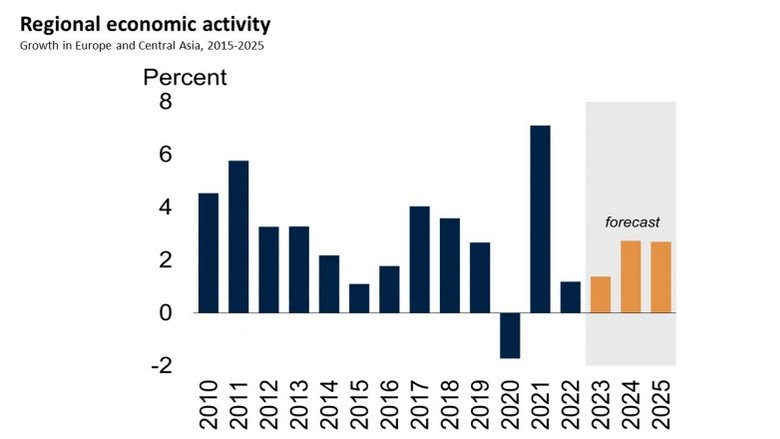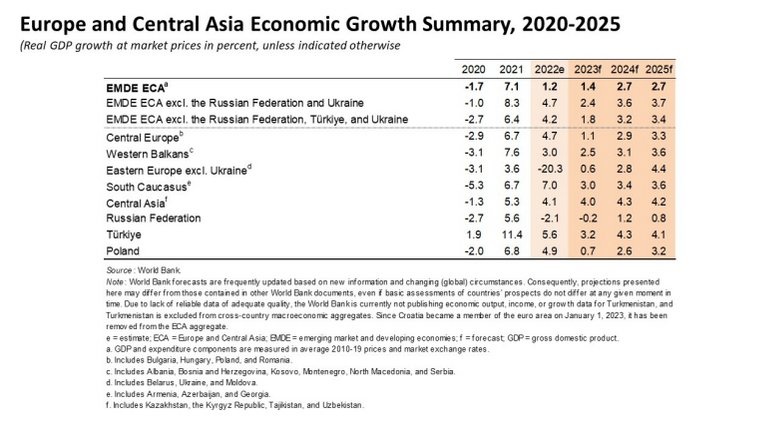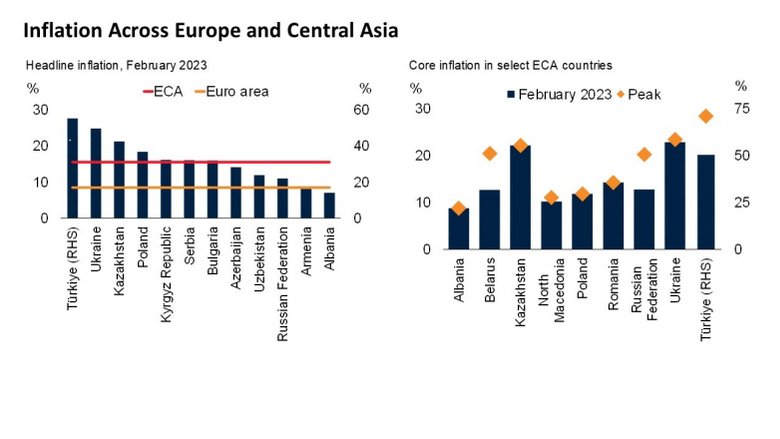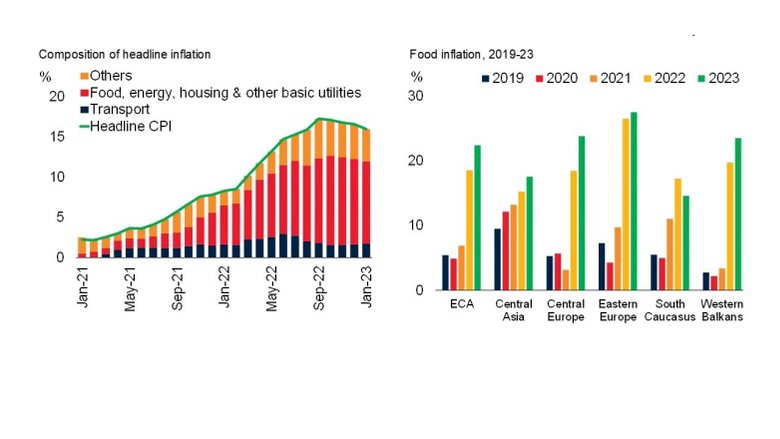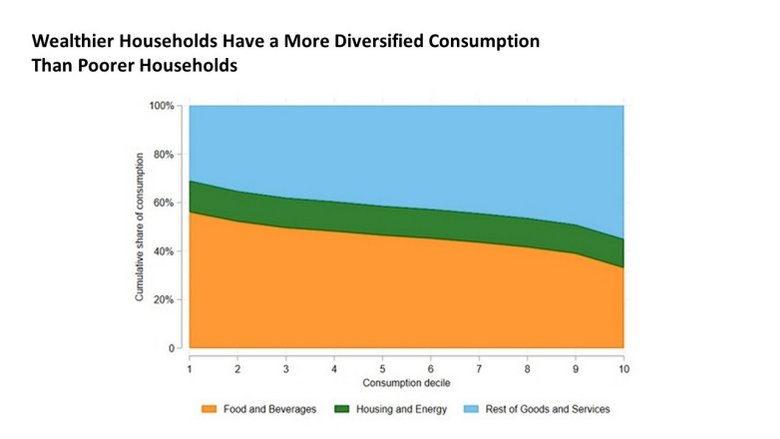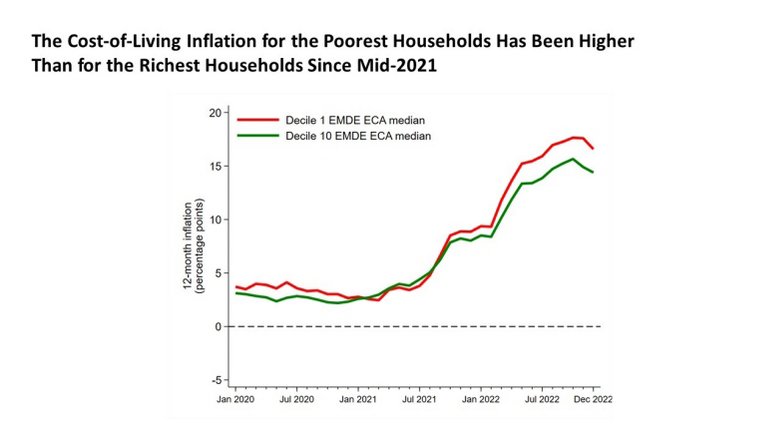The economic fallout from Russia’s invasion of Ukraine continues to have profound impacts on the economies of the Europe and Central Asia (ECA) region. The latest edition of the Economic Update for the region was published in April 2023, titled Weak Growth, High Inflation, and a Cost-of-Living Crisis. Here are some highlights from the report:
1. Growth to remain subdued
Now in its second year, Russia’s invasion of Ukraine continues to deal a blow to the economies of the Europe and Central Asia region. The ongoing fallout from the invasion, high inflation and higher global interest rates are dimming prospects for the regional economy, which is now expected to grow by a better-than-previously-expected 1.4% in 2023, largely reflecting upgrades to the pace of economic activity in major regional economies. Regional growth is expected to increase to an average 2.7% over 2024-25 as inflation eases, domestic demand recovers, and the external environment improves.
The outlook remains highly uncertain. Growth in 2023 may be weaker if the war caused by Russia’s invasion of Ukraine escalates further, food and energy prices continue to increase, interest rate hikes accelerate globally or in the region, or there is a sudden reversal of capital flows to the ECA. There could also be spillovers to growth from the recent developments in the US and European banking sectors.
2. Challenges ahead
The deterioration in the region’s near-term growth prospects reflects dampened private consumption and investment amid tighter global financial conditions, weaker external demand, and persistent inflation. Sustained weakness in external demand is projected to hamper exports, as activity in the euro area continues to soften and spillovers from the reopening of China’s economy remain modest.
Ukraine’s economy is projected to grow by 0.5% this year, following a staggering contraction of 29.2% in 2022, the year of Russia’s invasion of the country. While the economic toll suffered by Ukraine as a result of the invasion is enormous, the reopening of Ukraine’s Black Sea ports and resumption of grain trade, as well as substantial donor support, are helping support economic activity this year.
In Türkiye, the region’s second largest economy, the devasting earthquakes of February 2023 have added to already considerable headwinds and risks to the growth outlook. Incorporating the impact of the recent earthquakes, growth is projected at 3.2% in 2023. It is forecast to rise to an average of 4.2% over 2024-25, underpinned by government support to households and investment amid the reconstruction efforts following the earthquakes.
Excluding Russia, Türkiye, and Ukraine, growth in the rest of the region is forecast to fall to 1.8% in 2023 from 4.2% in 2022.
3. Inflation shock
One of the most far-reaching impacts of Russia’s invasion of Ukraine has been the spike in inflation, particularly the increase in global energy and food prices. These increases passed into domestic prices for most countries in ECA. Indeed, increases in prices for food and fuel accounted for two-thirds of inflation in the region. Median 12-month inflation in ECA peaked at 15.7% by late 2022, the highest level of inflation these countries have seen in a quarter century, and the highest among all developing regions of the world.
While inflation began rising in 2021, as countries in the region reopened following the COVID-19 pandemic, it really surged in 2022, as Russia’s invasion of Ukraine led to disruptions in exports of key food and energy commodities.
4. The unequal burden of inflation
The report’s analysis reveals the unequal burden of the cost-of-living crisis. Different households face a different inflation rate depending on their consumption patterns. Lower-income households spend a much larger share of their money on food and housing, while wealthier households have a more diverse pattern of consumption.
Due to differences in their consumption and varying price increases across goods and services, the poorest households faced significantly higher inflation than the wealthiest households in almost every country in the region.
In fact, inflation was 2 percentage points higher for the poorest 10% of the population compared to the wealthiest 10%. This difference exceeded 5 percentage points in some countries in the region, including Moldova, Montenegro, and North Macedonia.
5. Better assessment, better policies
Governments across the region responded to the cost-of-living crisis with social assistance and subsidies, the latter including moratoriums on energy price increases, caps on electricity and natural gas prices for households and businesses and reduced public transport fees. The report’s findings on the unequal burden of the cost-of-living crisis have strong policy implications, because many public programs targeting vulnerable populations link eligibility and benefits to the average Consumer Price Index (CPI) based inflation rate and not the higher cost-of-living increase that disproportionately affects the poor.
During periods of high inflation, the CPI is not a reliable estimate of the true cost of living. Policies to protect vulnerable groups and promote economic growth need to take into account the different inflation rates faced by households of different income levels. In fact, policies that don’t account for the varying levels of inflation are likely to provide inadequate support to vulnerable groups and may end up being both inefficient and less effective.
The report recommends going beyond the CPI to measure inflation in order to capture more precisely the actual cost of living of the poorest.
